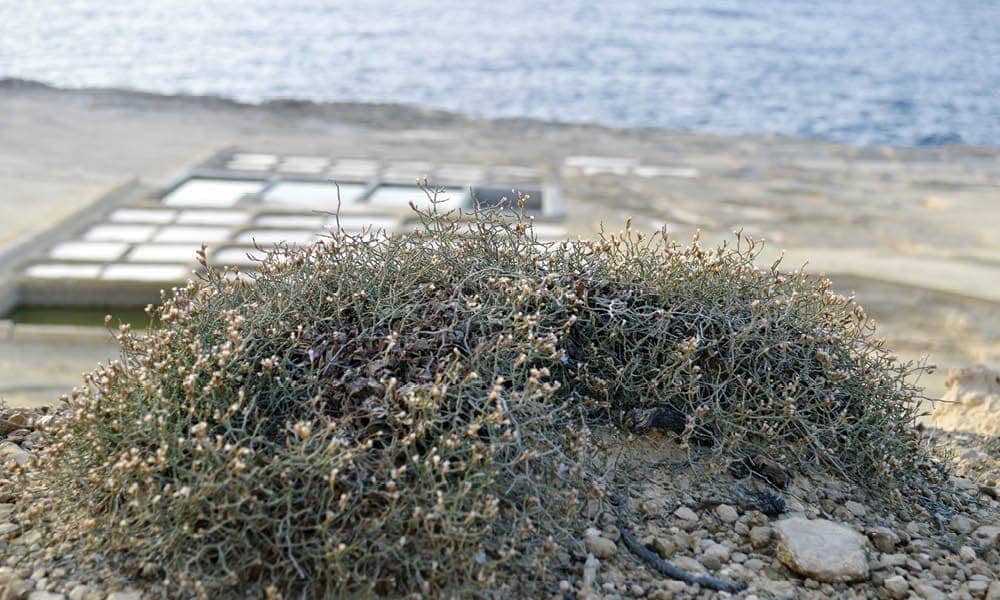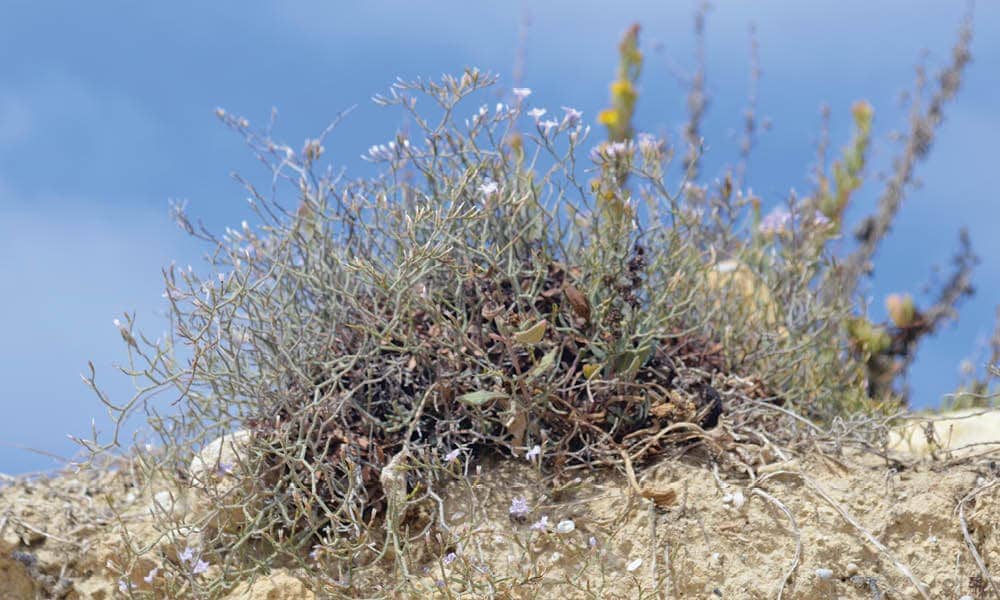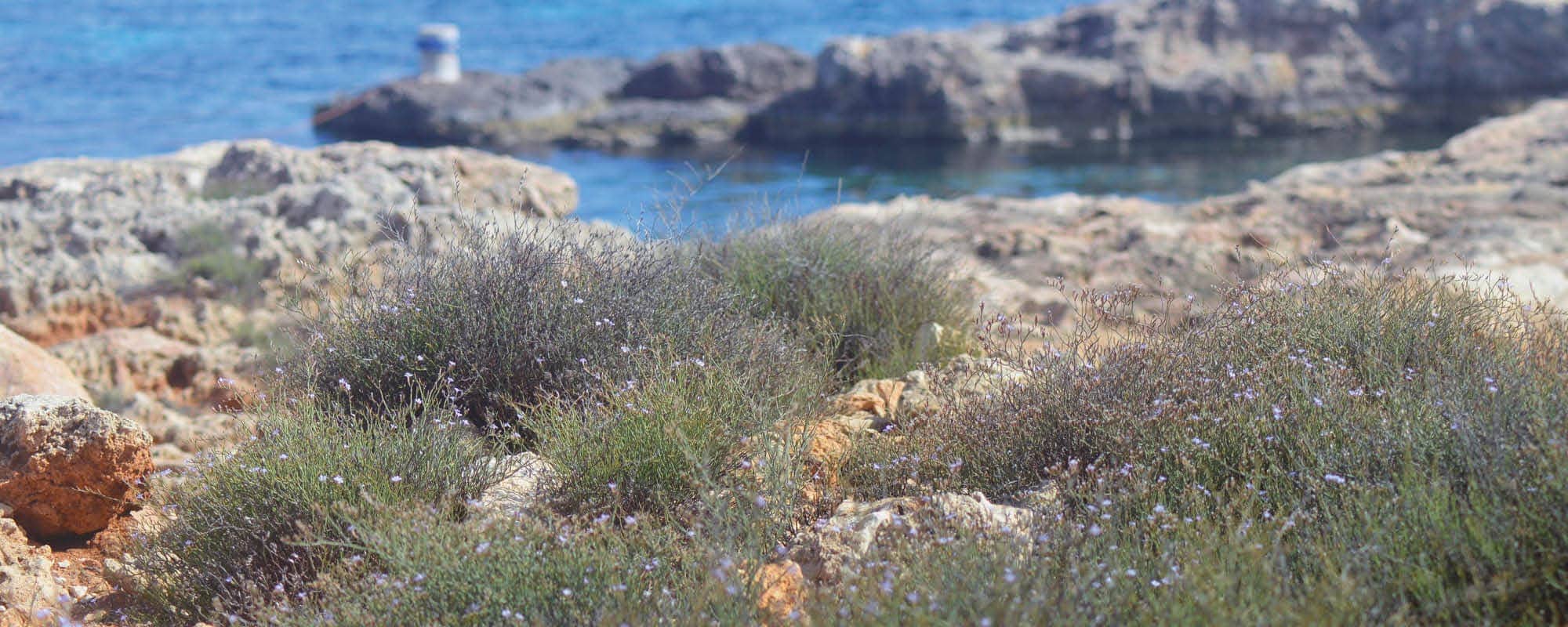Conservation is a 21st century hot topic. It is a top priority worldwide to ensure the lasting protection of the planet and its natural resources. But how can we even begin to conserve our natural environment if we don’t understand it? Ines Ventura investigates.
Why is it that some plants thrive in arid environments while others struggle? Through years of evolution, plants have developed unique coping mechanisms such as having a thick, waxy covering to keep them cool. But for biologists, this is hardly a satisfying answer. What are the exact, genetic factors that help these plants survive?
The Endemic de novo Genomes (EDGE) project aims to find out what these characteristics are by sequencing the genomes of selected endemic plants. This type of information, contained in the genes of each individual, determines the physical features that the researchers are interested in.
Limonium melitense and L. zeraphae are two types of sea lavender, endemic to the Maltese Islands. Being adapted to harsh environments, these species are able to survive soil salinisation (a high amount of salt in the soil) and grow on rocks. To date, the researchers from the University of Malta involved in this project were able to read and assemble the entire genomic information of these Limonium species, sequencing the first endemic Maltese plant.
There’s a Method to my Sequencing
Our genomic information is the equivalent of a book. Each letter corresponds to a piece of information that, when put all together, captures the unique story of each book. Likewise, when we are sequencing, we are actually reading each individual letter until we can read the entire sentence. Breaking down the genetic information, commonly known as DNA, into small fragments allows equipment to read the sequence, and then bioinformaticians assemble the information into digital models.
Sequencing these genomes is hardly straightforward though. ‘First, we had to identify the individual plants in the field,’ explains Dorita Agius, Senior Lecturer in Biology at Junior College and the PhD student involved in the project. There are at least three Limonium species in Malta, and only two of them are endemic to the islands. ‘That was one of the challenges of this project, to make sure that we didn’t have the non-endemic plants.’ To do so, Agius performed morphological studies, categorising each species based on their size, shape, or structure.
The DNA of each individual was then extracted and sequenced. These steps were performed in collaboration with the French Plant Genomic Centre in Toulouse, France — a research centre dedicated to plant genome exploration. The EDGE project used a third-generation sequencing technology, also known as long-read sequencing. Generating substantially longer reads, it identifies repetitive sequences in the genome better than its predecessors, resulting in more accurate genome assemblies.
‘We sequenced a novel genome, not having a reference sequence available for alignment,’ explained Agius. ‘That’s why it is called de novo.‘ The researchers were able to generate a genome model and will eventually be able to annotate it. Their results were robust since the assemblies (the overlap of the shorter fragments to deduce the complete genome sequence) are over 95% complete.
The selection of which technique to use in sequencing studies is defined by the genome size of the organism. Therefore, researchers estimated the genome size of both L. melitense and L. zeraphae using flow cytometry with help from the laboratory of Prof. Jaroslav Doležel, an expert in this field from the Institute of Experimental Botany in the Czech Republic.
It’s important to highlight the difference between these studies and genetic engineering. While sequencing is limited to reading the genetic information, genetic engineering implies DNA manipulation. For the EDGE Project, the goal is to sequence the genome. However, it would be possible to use this information in experiments involving genetic engineering further down the line.


Sequencing to Save the Planet
Besides conserving endemic flora, the act of sequencing allows scientists to better understand the unique properties of these plants. Limonium species, for example, have therapeutic uses and function as an antibacterial, anticancer, anti-inflammatory, and an antivirus agent. While sea lavender species are frequently referred to in alternative medicine practices as beneficial, it has been difficult to pinpoint exactly why they are helpful.
It turns out that these characteristics are an outcome of small compounds produced by the plants that are not directly involved in their normal growth, development, or reproduction. Known as secondary metabolites, several of them have already found applications in modern medicine. These genomic studies can highlight which metabolic pathways produce these types of compounds, as well as identify new components that can be used in therapeutics.
Agricultural productivity is another example of how genome sequencing can better society. By comparing genomes of species with and without specific adaptations, researchers can identify naturally occurring genetic variations that enable plants to adapt to various environmental stresses such as temperature, light, salinity, the presence of heavy metals in the soil, and pathogens.
In a scenario in which the global population is expected to reach 8.5 billion by 2030, these mechanisms can be adapted to increase the current crop production rate to guarantee an adequate food supply worldwide. By identifying key genetic information that enables higher tolerance to increased temperatures, it can help prevent crop failures. These traits are also extremely important in the face of climate change. In the worst-case scenario, a total increase of more than 4℃ (from pre-industrial levels) by 2100 is expected. Having crops that can withstand these increased temperatures is crucial to avoid severe food shortages.
‘Can it fight climate change? Possibly, but we’re talking many years and many other projects down the line,’ replies Agius with humour. ‘The identification of genes that enable plants to adapt to such specific and harsh environments can bring knowledge to different fields and help to improve actual problems.’
In a local research environment dominated by human genome studies, Agius decided to pursue a plant genomic study. ‘It was the wow factor,’ laughs Agius. ‘to give the first two genomes of Maltese endemic plants to the University of Malta, genomes which are possibly useful for medical applications, climate change adaptations, and evolutionary studies.’ The expertise of Maltese researchers on this matter also allows them to contribute to a current and larger research project known as Earth BioGenome Project (EBP). The International Union of Conservation of Nature now counts more that 40,000 species (28%) as threatened with extinction, possibly reaching 50% by the end of this century. We also might soon face the possibility of massive ecosystem collapse on a global scale. It’s imperative to reach Earth BioGenome Project’s major milestones and discover the remaining 80 to 90 percent of species that are currently hidden from science for the first time in history. Therefore, the knowledge generated by the Maltese EDGE project can help to revolutionise our understanding of biology and evolution, conserve, protect, and restore biodiversity, and create new benefits for society and human welfare.
Currently, Agius is working at the Centre of Molecular Medicine and Biobanking, with Dr J. P. Ebejer (PhD supervisor), Dr Rosienne Farrugia (co-supervisor), and Dr Sandro Lanfranco (co-supervisor) and Prof. Joseph Buhagiar, both from the Department of Biology.
Project EDGE (REP-2020-009) is financed by the Malta Council for Science & Technology, for and on behalf of the Foundation for Science and Technology, through the Research Excellence Programme.





Comments are closed for this article!